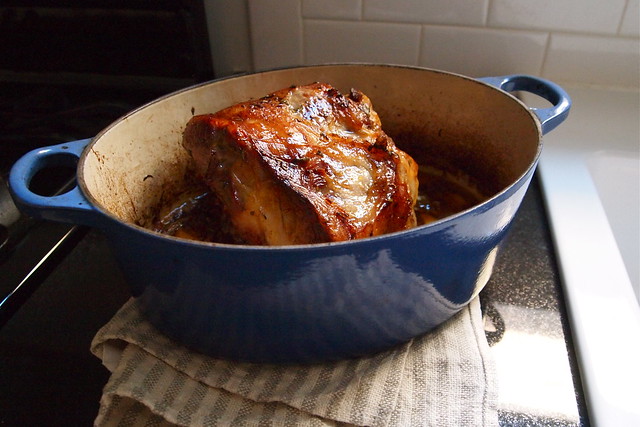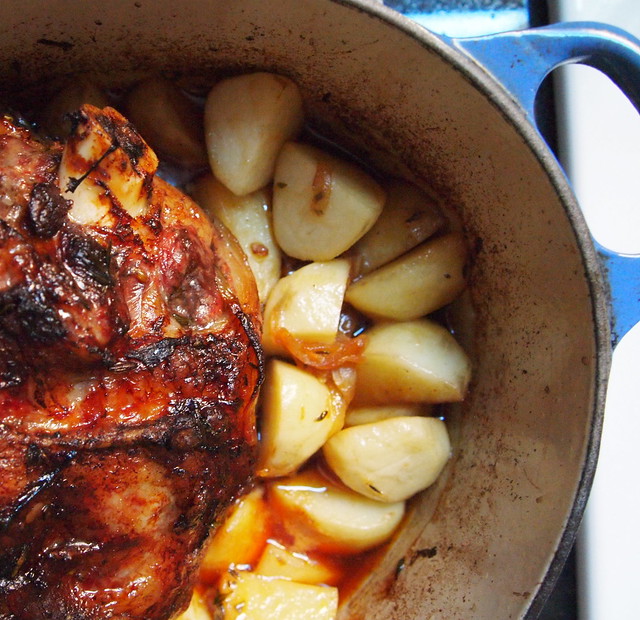
I've felt lately that I've been letting the days get away from me. While I've been researching and thinking, thinking and baking, things have been piling up, bit by bit. Cookbooks and philosophy texts sit in haphazard stacks all over the apartment. Some sort of upset is imminent, I'm sure. I've taken to writing at our little dining table, pesky breadcrumbs and all. There's also a canvas bag in the kitchen I keep tripping over. I used it to lug things back from the garden all summer, and it is still slumped where I left it well over a month ago. It's mud-caked from a hurried last beet-greens harvest and full of half-empty seed packets I still need to sort through. And earlier this week, my remaining bottle of elderflower syrup exploded in the refrigerator! I was not home at the time, but I'm sure that it made a spectacular commotion. (I'm a bit sorry to have missed it!) There was glass and syrup everywhere. It should have occurred to me to pop the top off every now and then. Fermentation gases, friends--these are not to be underestimated!
But it hasn't all been mayhem around here. My dissertation research is finally starting to take shape. And the baguettes I pulled out of the oven this week were decidedly less woeful-looking. Also, there was this lamb shoulder, slow-roasted in a lavish puddle of wine, smoked paprika, onion, and whole garlic cloves.
When there is snow on the ground, this is the sort of cooking I like doing best--slow, deliberate, decidedly leisurely. Once you've rubbed salt, rosemary, and thyme into the lamb and cooked down some onion and garlic, there is not much else to do. The lamb joins the onion and garlic in the pan, along with the wine and paprika. Then it all goes into the oven. You just need to look in on it once in a while and do a little basting. Towards the end, you crank the heat and drop in some quartered potatoes to finish with the roast.
By the time evening closes in, then, you'll have something marvellous on your hands. The lamb will be gleaming, falling off the bone, crackling at the edges. Its gaminess will have been tamed just enough by the wine and herbs. And what it didn't drink up the potatoes will have. You should dig deep with this one. Pull that silken onion, those sweet, slumped garlic cloves from the bottom of the pan and add them to your plate. You won't regret it.
I intended with this roast to have a little less of the days get away from me. I had a few days' worth of sandwiches in mind. But I should have known--lamb only gets gamier with time. I have been countering that with sharp dijon mustard and roasted red peppers. But really, what you should do if you make this roast is gather some friends 'round and remind them of just how much they matter to you.
Roasted Lamb Shoulder in White Wine and Herbs
Adapted, just a little, from Moro East
1 lamb shoulder, bone-in, about 4.5 lb
3 teaspoons fine sea salt
1 tablespoon fresh thyme leaves
1 tablespoon finely chopped fresh rosemary
5 tablespoons olive oil
1 large onion, roughly sliced
18 garlic cloves, peeled
2 bay leaves, preferably fresh
1/2 teaspoon fennel seeds
1/2 teaspoon smoked sweet paprika
1 1/2 cups good white wine
3 tablespoons brandy (optional)
2 lb small waxy potatoes, peeled and quartered
Rub the shoulder with the fine sea salt and half the thyme and rosemary and let it stand for an hour.
Preheat the oven to 350 degrees F.
Meanwhile, put the olive oil, onion, garlic, and a pinch of salt in a large roasting pan. Fry for about 10 minutes over medium heat until the onion softens and starts to colour. Stir in the bay leaves, fennel seeds, paprika, and remaining thyme and rosemary, followed by the wine and brandy, if using. Place the shoulder in the pan, skin-side up, and put the pan in the oven. Roast for 2 1/2 hours, basting the shoulder at least 4 times (be careful not to leave any onion on top of the shoulder - it may burn).
Toss the potatoes in the juices in the roasting pan. Turn up the oven to 425 degrees F and cook for a further 40 minutes, adding a splash of water to the pan if the juices have totally dried up. Taste for seasoning and leave to rest for at least 10 minutes before serving.
Serves 4-6.



